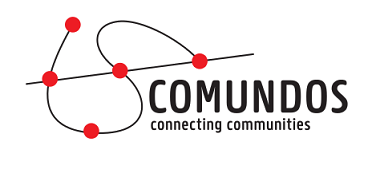SDG16 in the classroom: Peace, Justice and strong Institutions
“Promote just, peaceful and inclusive society”
At the end of this lesson, students will be able to:
- Understand the concept of “peace” in all its forms
- Understand the importance of having a child registration
- Understand the concept of “justice”
- Understand the issues related to corruption and bribery in all its forms
- Identify the impacts of the Covid-19 pandemic on the achievement of SDG16
- Analyzing digital stories concerning SDG16 by identifying the related target(s)
SDG16 advocates for several conditions which will ultimately form a just, peaceful and inclusive society.
This entails ending of violence of any kind to anyone, especially children who are the most affected by violence; ensuring justice for all; ending organized crimes, corruption and bribery in all their forms; ensuring more transparent and strong institutions; guaranteeing legal identity for all; ensuring human rights for all.
There is still much to be done to achieve this goal, especially because of many armed conflicts going on in certain areas of the world and the huge gap between the rich and powerful and the poor and powerless. For instance, armed conflicts are a huge threat to peace, human rights and cause people to flee from their country.
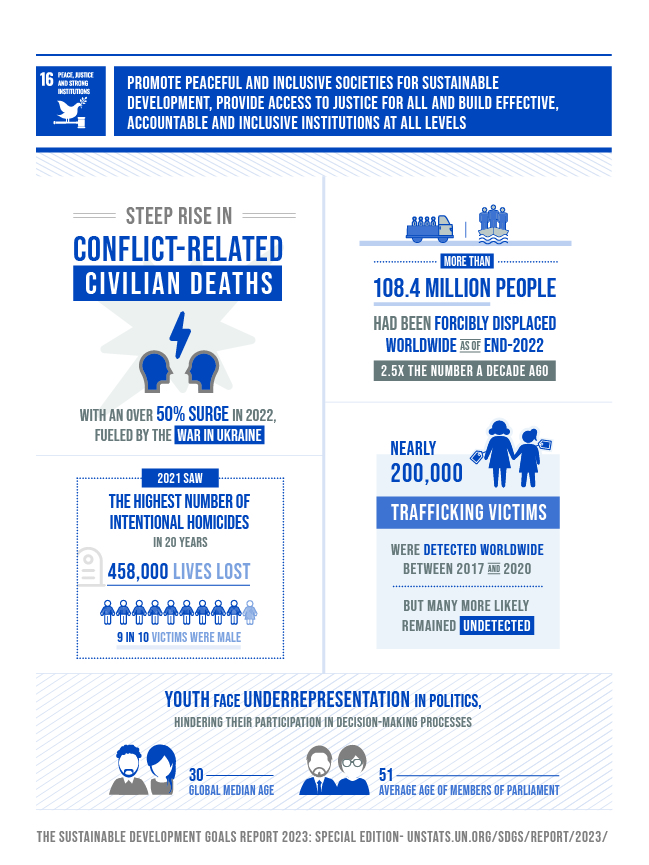
Brainstorming session through the following questions:
- The term “peace” can be defined in different ways. However, in certain areas of the world, peace is not a big concern as it is taken for granted. In your words, what is “peace”?
- Do you live in a peaceful society/environment? Does everyone live in peace?
- Imagine you were not allowed to freely express yourself, speak up and say your opinion, how would you feel?
- Violence is also a sign of a lack of peace. Online bullying (cyberbullying) is a “recent” type of violence against children that arose due to the rise of technology and technology accessibility. What other forms of violence are you aware of?
- What are the victims and perpetrators of violent acts?
- Were you officially registered by your parents/caregivers when you were born (birth registration)? Why do you think it’s fundamental to have such a certificate?
- What is the definition of justice?
- Does everyone have equal access to justice? What are the consequences of the lack of access to justice?
- Who populates prisons? Are imprisonment systems fair and just everywhere in the world?
- Target 16.5 aims to “Substantially reduce corruption and bribery in all their forms”. Do you notice and/or experience any form of corruption and/or bribery in the village/city where you live? Where do you think corruption is most prevalent? Why?
- How has Covid-19 impacted the achievement of this goal?
Possible adaptations: (Online) This activity can be done with the use of online tools such as Jamboard, Miro or Mentimeter.
Relevant materials:
-
Why it matters (UN) focuses on the goals and actions that should be taken to help achieve this goal.
-
Child registration (UNICEF) focuses on the importance of birth certificates
-
Report 2023 (UN) reflects on the most recent data
Students watch the three proposed stories and identify the related target(s), as shown in the first video. as shown in the first video. Afterwards, they explain in their own words how the story is addressing the target(s) chosen.
SDG16 targets can be found here.
Example:
Digital story: The closure of schools in Cameroon
Linked targets:
Target 16.1: Significantly reduce all forms of violence and associated death rates worldwide
Taget 16.2: End the abuse, exploitation, trafficking and all forms of violence and torture against children
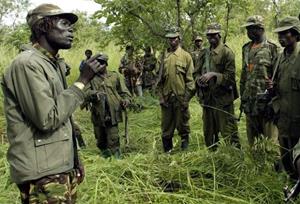 Story 1: A former child soldier in Uganda
Story 1: A former child soldier in Uganda
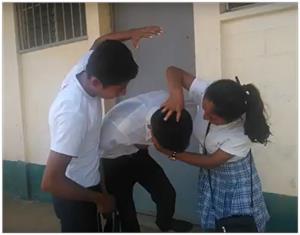 Story 2: Against bullying in Guatemala
Story 2: Against bullying in Guatemala
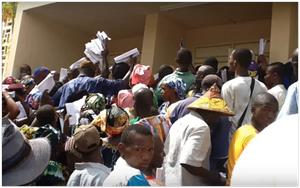 Story 3: People without birth certificate
Story 3: People without birth certificate
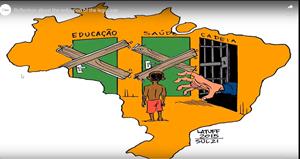 Story 4: Reduction of the legal age (Brazil)
Story 4: Reduction of the legal age (Brazil)
 Story 5: The work of the pupils, children, apprentices in cotton fields (Benin)
Story 5: The work of the pupils, children, apprentices in cotton fields (Benin)
You can also select other digital stories of Comundos related to SDG16
This quiz is about UN Goal 16: Peace, Justice and strong Institutions. You can either use it at the end of your lesson to revise the topics you talked about or at the beginning of the lesson to challenge students prior knowledge and gain their attention.
For SDG16 (peace, justice and strong institutions) sheet, our favourite pedagogical twist is:
Media literacy: Interview/report with recording or video (about 2-3 minutes long). At the end of the lesson cycle, tell students that they will become “interviewers” and “interviewees”.
For this closing activity, students will have to interview each other about what they have learnt in the lesson, what they struggled with and other questions that they have in mind. This activity can be used as a reflection moment for students.
The interviewers have to come up with some questions (about 3) to investigate the focus of their interview.
To learn more about journalism tips on how to conduct good interviews, provide them with this link
The interviewer can simply record the interview or film it with a camera (cellphone or professional camera). If you have another pedagogical twist in mind, feel free to apply or check the pedagogical twist list.
-
Suma's story - Nepal is a short documentary taken by the movie “Girls rising” describing a form of child slavery in Nepal.
-
Italy: Breaking the Slave Trade focuses on the issues of human trafficking for prostitution (a huge problem in Italy)
-
Collaboration Key to Societies’ Resilience against the risks of Harmful Content Online is a project that enables media as a tool to learn and practice peace
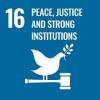
A gift for Comundos
Over the years, Comundos has helped remote communities around the world by teaching critical thinking, media literacy and the use of communication technology.
To do this effectively, we need your support for computers, translations, courses and social media management.
Thank you .
BE11 1030 2973 8248
